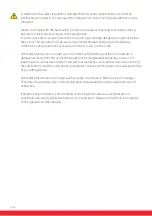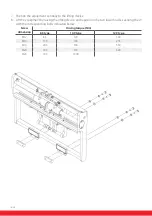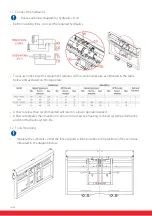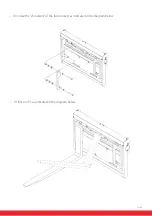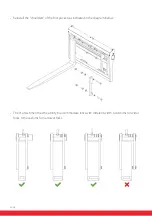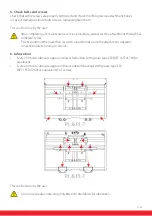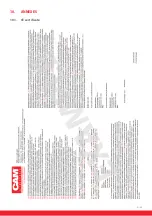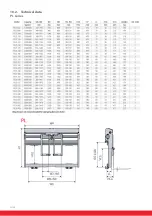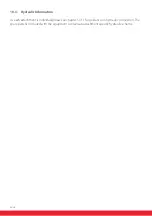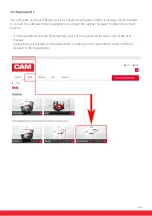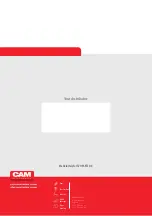
26/36
2. Cleaning
Clean as needed and use a cloth dampened in a soapy solution (REF 131TA5500)* or wipes
(REF 147TA3378). Do not use solvents, petrol, strong detergents etc.
If the equipment is heavily soiled, the use of a pressure cleaner is only permitted providing that it is set
to a maximum of 200 bars.
When you use a high-pressure cleaner, do not direct the jet onto the bearings and seals, otherwise,
the grease will be washed out and the lifespan of the machine will be shortened.
Never use sandpaper or abrasive material on the attachment.
This can be done by the user.
* Soap solution must be diluted by 5 to 10%. Use the soap solution to wash off the dirt and
wipe off the soap residue with a cloth dipped in clean water.
3. Check the hydraulic circuit
Check the hydraulic circuit for any leaks.
Replace any damaged hydraulic hoses to prevent them from rupturing and causing any accidents.
Never try and search for leaks or plug a leak by hand. Liquids under high pressure can easily
penetrate skin and clothing, and may cause serious injuries.
This may only be done by a qualified service technician and according to the manufacturer’s
instructions.
4. Check the connections of the hydraulic system
Make sure that the hydraulic system is connected with the correct hydraulic hoses.
While wearing safety gloves, check that there is no oil leakage from the pipes, fittings or cylinders.
This can be done by the user.
Never try to seal a leak yourself. This can cause injuries or damage to your skin and clothes.
Only qualified and authorised personnel is permitted to repair or maintain the product.
To prevent leaks, replace hydraulic hoses if needed, while wearing safety gloves.
This may only be done by a qualified service technician and according to the manufacturer’s
instructions.

